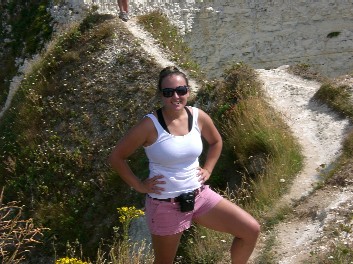The Real Jurassic Park: Geological Explorations in Southwest England
University of Washington, Tacoma
TESC 417: Summer 2006
The Real Jurassic Park: Geology field course along the south coast of England (TESC 417)
Home
Project: The Great Fire of London and the Reconstruction
Student: Heidi Palermo

PROJECT SUMMARY
Early Sunday morning, September 2, 1666 a fire started in a bakery in the heart of London. The fire began to spread throughout the city and eventually engulfed everything in its path. The houses and building, predominantly constructed of timber and thatch, burned out of control for three days. The fire destroyed over 13,000 houses, 87 churches, and 50 livery halls over an area of 436 acres. Although immense material destruction surmounted, loss of life was minimal. In fact, the fire actually saved thousands of lives by wiping out the plague epidemic which was rampant the year prior to the fire. The Great Fire of London also gave architects and city planners the chance to rebuild London in a more efficient and aesthetically pleasing way. Roads were widened, houses and building were constructed of stone and brick, and grandiose monuments and cathedrals were erected. Sir Christopher Wren, the famous architect, oversaw the construction of over 50 churches, including the most memorable St. Paul's Cathedral. Wren also helped popularize the Portland limestone by importing over 6 million tons during the reconstruction. The Portland limestone was quarried off the Isle of Portland, and can still be seen in hundreds of buildings in the heart of London City to this day.
PROJECT LINKS
Student Paper
Student Presentation
LOCATION LINKS
London
Home

